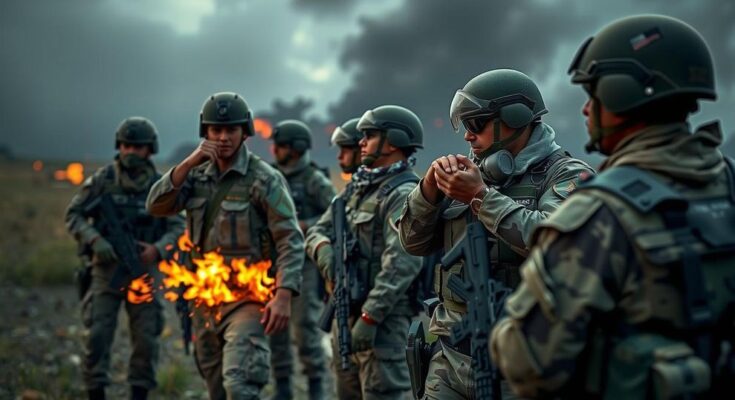Mexico’s National Guard shot and killed two Colombians and injured four others during a confrontation near the U.S. border. Authorities believe the incident involves migrants, although some speculate about cartel connections. This event raises broader concerns about the militarization of migration enforcement in Mexico and the implications for civilian safety, particularly for vulnerable migrants.
In a tragic incident near the U.S. border, Mexico’s National Guard shot and killed two Colombians while wounding four others. The confrontation arose when a patrol, responding to suspicious activity involving two trucks, came under gunfire. Following the exchange, one truck fled the scene, while the guard opened fire on the other, resulting in fatalities among the Colombian nationals. While official reports suggest the possibility of involvement in organized crime, authorities are treating the victims as potential migrants caught in the crossfire. This has led to ongoing debate about the National Guard’s role in migration enforcement and its implications for civil safety. The event occurred on a remote road near Tecate, close to the California border. Mexican officials stated that while one vehicle evaded capture, the other was fired upon after guardsmen detected signs of armed hostility. Unfortunately, conflicting reports about the nature of the deceased and the wounded, coupled with ambiguity regarding their status as migrants, hinder a full understanding of the incident. Alongside the two deceased, another Colombian and a Mexican were found unharmed at the scene and subsequently detained. An investigation revealed a firearm and ammunition consistent with assault rifles at the location—but details about the wounded individuals remain unclear. The incident raises broader concerns regarding the involvement of Colombians in Mexican cartel activities, as many have been found to be recruited by these powerful organizations. However, by turning over a surviving Colombian to immigration officials and contacting the Colombian consulate, Mexican authorities seemed to indicate that these individuals were likely migrants rather than cartel members. This incident is not isolated; similar encounters have raised alarm regarding the consequences of Mexico’s militarized approach to border security. Advocacy groups argue that this strategy endangers vulnerable migrants and blurs the lines between law enforcement and military operations. Previous incidents, such as a recent shooting in Chiapas that led to the deaths of six migrants, underscore the urgent need for reform in how migration and law enforcement are handled in Mexico. Critics assert that a military-controlled National Guard is inadequately equipped for civilian oversight, which raises serious questions about public safety for migrants seeking refuge in the U.S. Colombia has responded cautiously to the incident, seeking clarifications and urging justice for the victims, who, according to its foreign ministry, were innocent migrants caught in a violent encounter. This response signifies the potential for strained diplomatic relations and highlights the ever-present dangers migrants face on treacherous journeys toward the U.S. border. Given the complex interplay of migration, crime, and cross-border relations, this event necessitates a careful examination of policies governing human mobility and safety in the region.
The situation in Mexico regarding migration and law enforcement has become increasingly complex, particularly with the militarization of the National Guard under former President Andrés Manuel López Obrador. This shift aimed to address issues of security and crime, yet it has drawn criticism for its impact on civilians, especially migrants. The blending of military and civilian law enforcement roles has raised questions about the safety and protection of vulnerable populations caught in the escalating violence associated with cartel activities. Amid rising tensions and violence, many migrants from Colombia and other countries are being ensnared, often facing life-threatening situations during their journeys toward the U.S.
In conclusion, the recent shooting incident near the U.S. border highlights significant concerns regarding the safety of migrants in Mexico amid a militarized approach to law enforcement. The complexities surrounding the identities of the individuals involved, coupled with historical patterns of violence against migrants, necessitate urgent discussions on the reforms needed in policing and migration policy. As Colombia continues to seek justice and clarity regarding its citizens, the ramifications of this tragic event on bilateral relations and humanitarian efforts must not be overlooked. Achieving a balanced and humane response to migration remains a pressing challenge for Mexico and the wider region.
Original Source: www.newsweek.com




